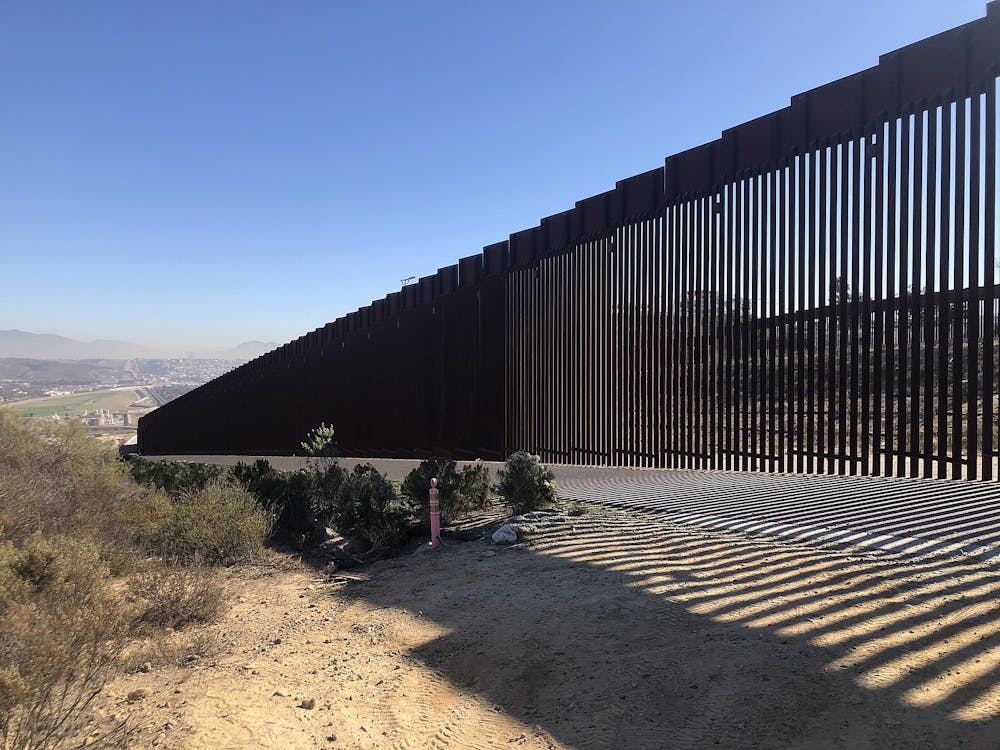By Rajika Chauhan
Staff Writer
In a reversal of one of the key points of the president’s platform, the Biden administration announced on Oct. 5 that it would begin construction on up to 20 miles of wall on the U.S.-Mexico border, according to The New York Times (NYT). The news is surprising given the administration’s fierce stance against former President Donald Trump’s previous border wall construction. Officials from the Biden administrations have claimed that the decision is a result of Congressional restrictions and lies outside of the president’s hands.
Biden had stated during his candidacy that he would end all further construction on the border wall, as reported by Reuters. He told reporters on Thursday that he still does not believe walls are an effective solution to the rise in illegal border crossings. The contradiction in thought and action has been attributed to funding that was tied-up during the previous administration.
The NYT reports that Homeland Security Secretary, Alejandro N. Mayorkas, stated that Congress had appropriated funding for new sections of the border wall in 2019. The Biden administration claims that the funding cannot be shifted from its declared purpose, making this phase of construction inevitable.
Despite the administration’s public distancing from responsibility for the wall, statements made on federal documents indicate a belief in its necessity.
In a public notice, Mayorkas stated that “there is presently an acute and immediate need to construct physical barriers and roads in the vicinity of the border of the United States in order to prevent unlawful entries into the United States.”
Illegal border crossings have risen significantly in the time since Biden took office, with more than 2 million migrants being arrested so far this year, according to the BBC. A comparative 1.7 million were arrested by the year’s end in 2021. Biden halted all border wall progress on his first day in office, ending the Trump era policy of redirecting Defense Department funding for construction to circumvent otherwise budgetary limitations. This pause left sections of the wall incomplete, creating new openings for migrants to seek entry into the United States.
As reported by the NYT, the wall currently spans 706 miles along the nearly 20,000 mile U.S.-Mexico border, although it is not continuous due to differences in terrain. It has proven to be a dangerous barrier for migrants particularly due to attempts to scale it, with multiple deaths in recent years resulting from complications with the metal fence and height.
The effectiveness of a physical wall in controlling the border has been a divisive topic across both sides of the political aisle. While the idea of a wall has become a cornerstone of the conservative immigration policy since the Trump administration, the BBC notes that most Democrats argue that it is insufficient in halting illegal crossings. The concept of a wall itself has also been seen by some as a betrayal of America’s history of welcoming immigrants, whereas others find it a necessary measure to maintain national security.
The new sections of the wall are to be built in the Rio Grande Valley, where almost 245,000 people were arrested just this year, according to the NYT. The area’s isolation and dense brush alongside the river have made it a preferred crossing location for migrants, who often travel in large groups. After successfully crossing the border, a journey marked by dehydration and exhaustion that often requires medical rescue, migrants walk several miles to await processing by U.S. border patrol agents.
The uptick in border crossings has led to complaints by several of the U.S. cities that house migrants, with claims of overpopulation and strain on housing and medical services. New York City has taken in over 100,000 arrivals since last year, with Mayor Eric Adams predicting housing costs to rise to $12 billion in the next three years.
Frustrations have additionally grown in response to the government’s waiving of several key policies to pursue progress on the wall. The building of a barrier has required violations of key aspects of the Clean Air Act and Safe Drinking Water Act, angering environmental groups.
The border wall situation has left Biden in a difficult position, requiring a balancing act between his commitment to open immigration and environmentalism and demands for border security. While Biden has attempted to shift responsibility to the Trump administration for this new phase of construction, the permission of the act has highlighted an inconsistency between Biden’s policy and action, putting key factions of his base at unease.







